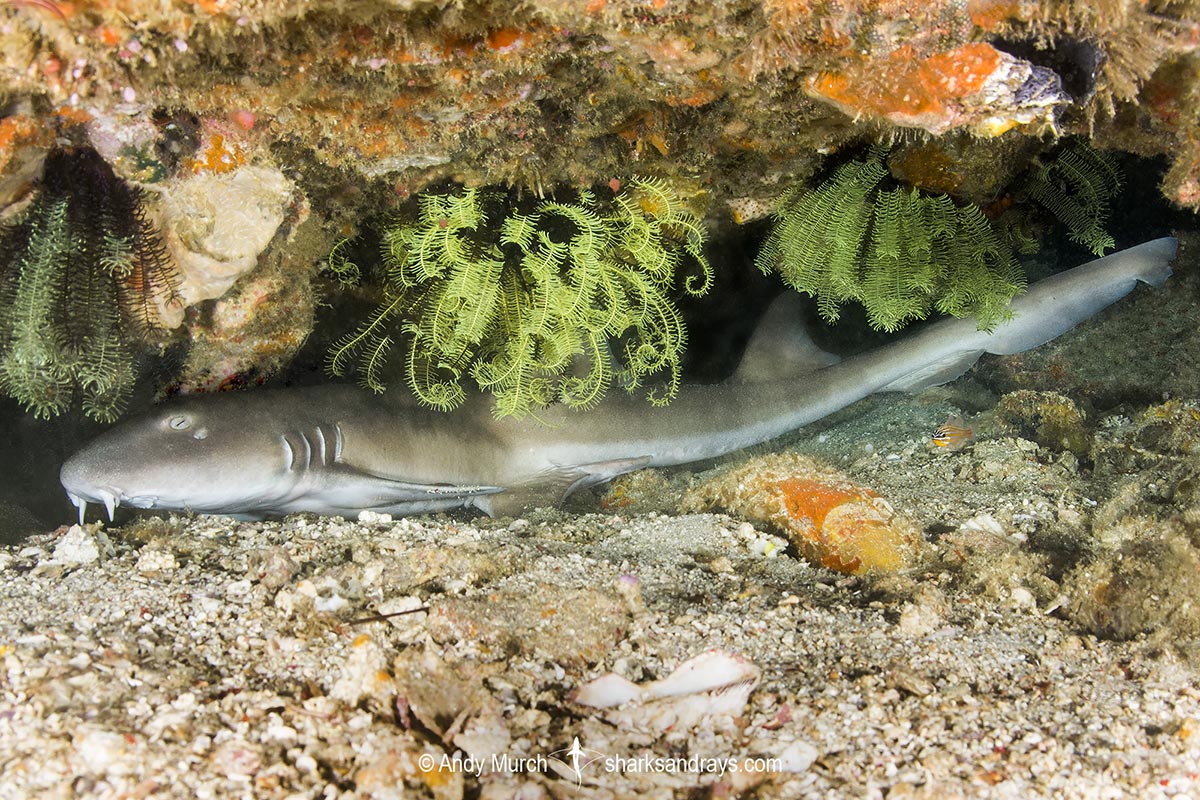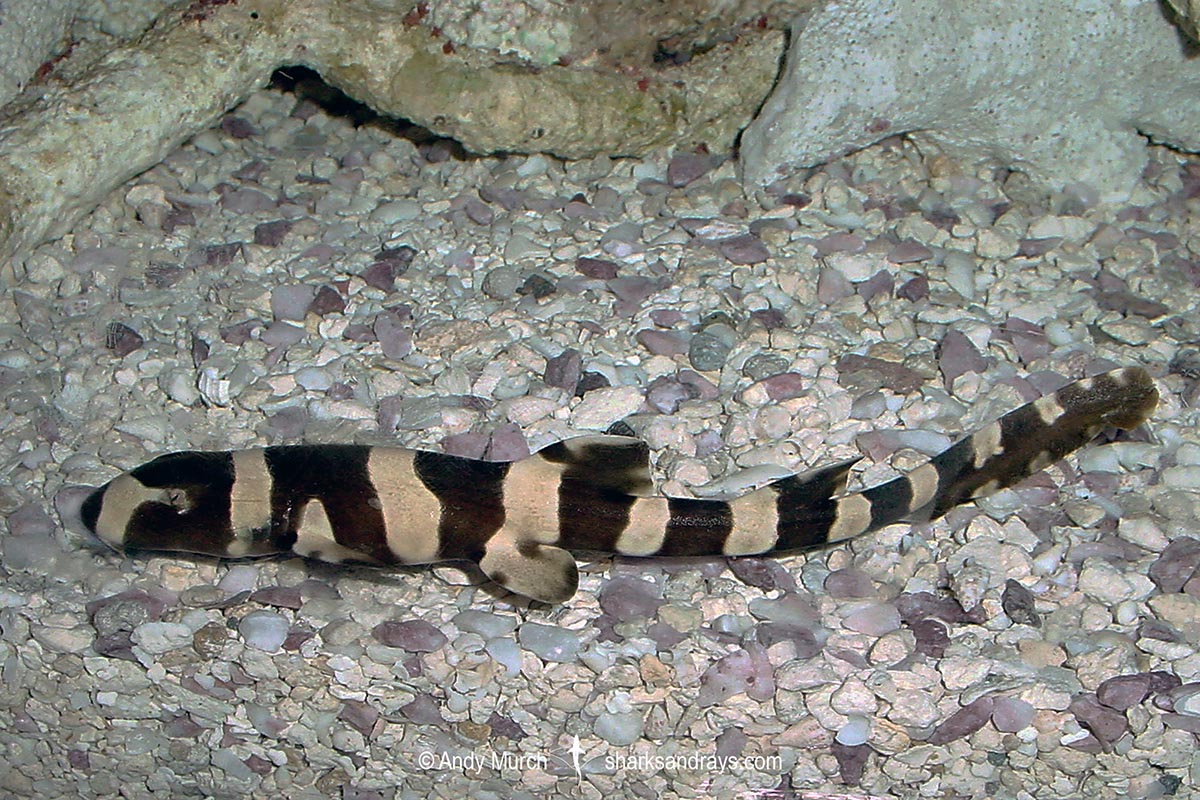Common name(s)
Brownbanded Bamboo Shark, Grey Carpetshark (IUCN).
Binomial
Chiloscyllium punctatum
Synonyms
Chiloscyllium indicum, Chiloscyllium margaritiferum, Chyloscyllium punctatum, Hemiscyllium punctatum, Hemiscyllium punctaturn, Scyliorhinus russellianus, Scyllium punctatum, Squalus russellianus.
Identification
Slender shark with a rounded snout. Snout length roughly equal to mouth width. Long barbells extend from nasal openings beyond mouth level. Spiracle slightly smaller than, and positioned below and slightly behind eye. Short gill slits. Gill slit margins are noticeably pale. A lateral groove on each flank runs from behind head to base of tail. Dorsal fins have concave posterior margins. First dorsal origin over pelvic fin insertion. Second dorsal almost as large as first. Anal fin rounded; positioned directly before lower caudal lobe. Caudal fin thin, with a long, rounded upper post-ventral margin, and a square terminal margin.
Dorsal coloration tan or greyish-brown with subtle darker bands. Bands may be absent in older adults. Neonates and small juveniles are strikingly patterned with bold, light and dark brown bands.
Size
Maximum size 132cm. Size at birth less than 13-18cm.

Conservation Status
NEAR THREATENED
The brownbanded bamboo shark is targeted throughout Southeast Asia. It is one of the most common species found in fish markets across Thailand, where overall catch landings of sharks have declined by >90% in less than a decade. Climate change and destruction of reef habitat are also contributing to population losses.
Furthermore, a recent study indicates that the Australian population (the only area where the species is listed as ‘Least Concern’) probably represents a different species i.e. Chiloscyllium magnus. In which case, the population of Chiloscyllium punctatum in Southeast Asia should be reassessed and probably moved to a higher threat category.

Habitat
Tropical coral or rocky reefs, intertidal pools, sand and mud flats, and seagrass beds. From the intertidal zone to at least 85m.
Distribution
From the east coast of India eastwards, throughout southeast Asia including southern Japan. Brownbanded bamboo sharks from Papua NEw Guinea and Australia are now considered a separate species; Chiloscyllium magnus.
Reproduction
Oviparous. In captivity, brownbanded bamboo sharks laid between 115 and 152 eggs each year. One captive female stored sperm for 45 months before fertilization.
Diet
Feeds on small bony fishes, crustaceans, and other invertebrates.
Behavior
Nocturnal. Rests by day in crevices on the reef or under corals.
Reaction to divers
Easy to approach with slow casual movements. Will bolt if molested.
Diving logistics
Brownbanded bamboo sharks occur throughout most of southeast Asia except Australia and PNG.
I have encountered them in the Gulf of Thailand, at Nusa Penida on the south coast of Bali, and at various sites around Malapascua Island in the Philippines.
What’s new
View our full list of updates
Similar species
Greater Bamboo Shark An extremely similar species. Distinguished by larger size, lack of speckles between bands on juveniles, and allopatric range in PNG and Australia.
Grey Bamboo Shark An extremely similar species. Distinguished by smaller size, less distinct white edging on gill openings, straighter posterior margins of dorsal fins, and no banding at all on adults.
